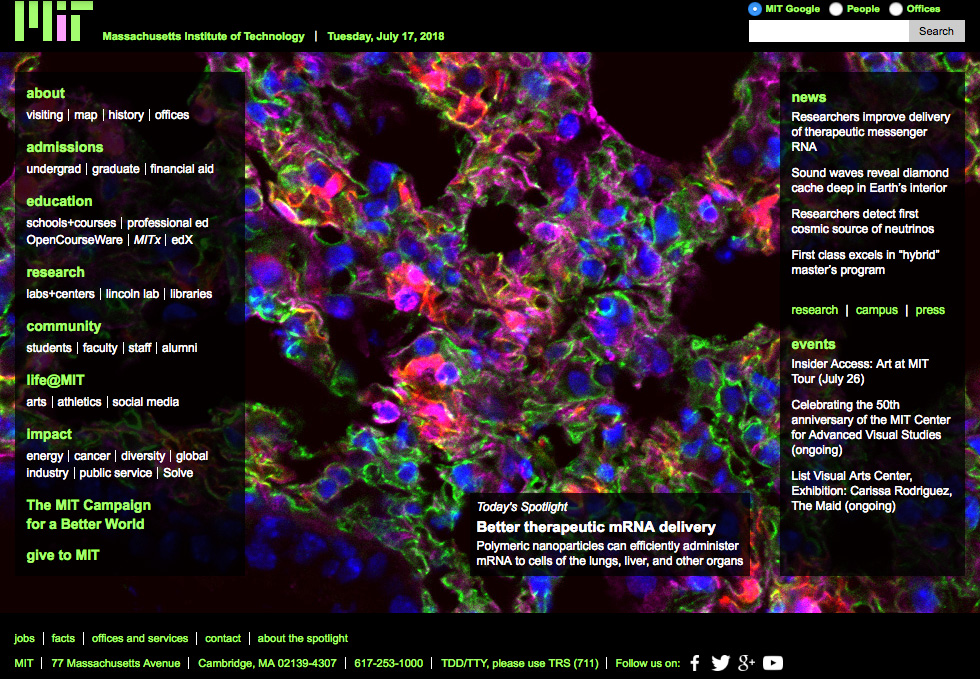Today’s spotlight features an image by Piotr Kowalski showing lung cells expressing synthetic mRNA (shown in red).
In an advance that could lead to new treatments for a variety of diseases, MIT researchers have devised a new way to deliver messenger RNA (mRNA) into cells.
Messenger RNA, a large nucleic acid that encodes genetic information, can direct cells to produce specific proteins. Unlike DNA, mRNA is not permanently inserted into a cell’s genome, so it could be used to produce a therapeutic protein that is only needed temporarily. It can also be used to produce gene-editing proteins that alter a cell’s genome and then disappear, minimizing the risk of off-target effects.
Read full article on MIT News.
In an advance that could lead to new treatments for a variety of diseases, MIT researchers have devised a new way to deliver messenger RNA (mRNA) into cells.
Messenger RNA, a large nucleic acid that encodes genetic information, can direct cells to produce specific proteins. Unlike DNA, mRNA is not permanently inserted into a cell’s genome, so it could be used to produce a therapeutic protein that is only needed temporarily. It can also be used to produce gene-editing proteins that alter a cell’s genome and then disappear, minimizing the risk of off-target effects.
Read full article on MIT News.




